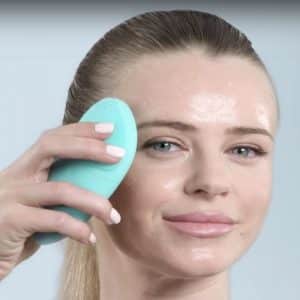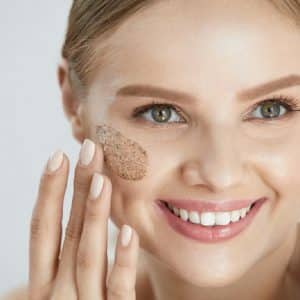
It is very important to note that when it comes to exfoliation, often, less is more. The exfoliation should be a gentle action on your skin. You don’t want to over-scrub and/or injure your skin. Slight redness is normal, but if you are over scrubbing and causing long-term redness or inflammation, you need to change what you are doing. Also, if you have sensitive skin you should use a very mild exfoliant so that you don’t damage it.
You also shouldn’t exfoliate your skin every day. Once or twice a week is often enough. The frequency of the exfoliation depends on your skin type, how sensitive it is and the type of exfoliating products you are using.
Manual Exfoliating Techniques for Facial Skin:
Manual or physical exfoliation uses a variety of aids to exfoliate the skin. These can vary from a natural bristled brush to an exfoliating glove (also known as a loofah). There are also scrub creams that contain small grains which exfoliate the skin. If you choose such creams, make sure to look at the ingredients and choose a product with small grains. Try to avoid large exfoliants like nut shells and fruit pits since they have a tendency to cause microscopic tears on the skin. Many dermatologist recommend using jojoba beads or sugar.
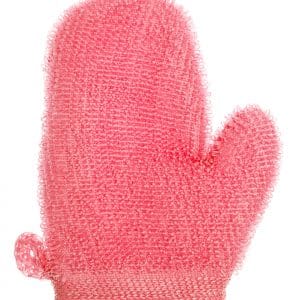
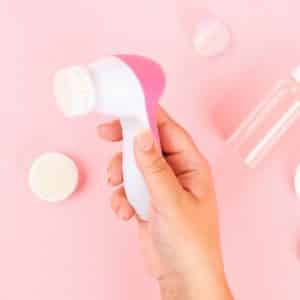
You should take the following steps:
- Take your bristled brush, glove or scrub cream and move in gentle, small, circular strokes across your face.
- Make sure to keep your movements light and not to forcefully rub the skin.
- Rinse with lukewarm water (hot water may irritate your skin).
- Gently dry your face with a towel and apply a moisturizer. It is highly recommended to apply a moisturizer since the exfoliation action dries the skin.
Chemical Exfoliating Techniques for Facial Skin:
Chemical exfoliators dissolve dead cells on the skin. In addition, they increase the cell’s turnover and help the skin look and feel smoother and brighter. The two most popular chemicals are alpha-hydroxy acids and beta-hydroxy acids.
The alpha-hydroxy acids, known as AHAs, are extracted from natural substances. They are highly recommended for those with dry skin since they remove the ‘glue’ that binds the dead skin cells together. Their major downfall is that they are water soluble and as such can’t penetrate deeply into the pores.
Beta-hydroxy Acids, BHAs, on the other hand are oil-soluble molecules. They operate by breaking down the bonds between the cells and are able to deeply penetrate into the pores and skin. Furthermore, BHAs have anti-inflammatory and antibacterial properties which makes them ideal for individuals with active acne or very oily skin.
The two products can be combined and you can create a exfoliating routine that includes both AHAs and BHAs.
If you have sensitive skin, it is recommended to stick to more mild chemical exfoliants. These are usually derived from fruits. Recommended products include those with papain which is derived from the Papaya fruit, and bromelain, derived from Pineapple. The fruit enzymes dissolve the keratin in the skin and only affect the Stratum Corneum.
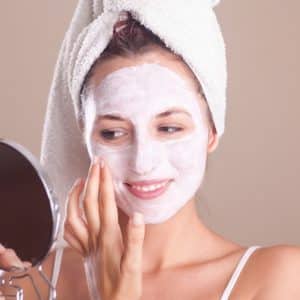
You should take the following steps:
1. Clean your face.
2. Apply your chemical exfoliant- use small doses and apply gently.
3. If the product is also a peel, follow the instructions and leave it on your face for the recommended duration.
4. Rinse your face with lukewarm water and apply a moisturizer.
Facial Skin Exfoliation using the NowMi treatment:
The NowMi treatment offers a novel alternative for facial skin exfoliation. The NowMi device uses a vitamin C rich effervescent tablet that gently exfoliates the face. During treatment, the tablet is combined with the NowMi cleansing gel. This combination causes a chemical reaction that dissolves small granules in the tablet and forms a mild abrasive surface.
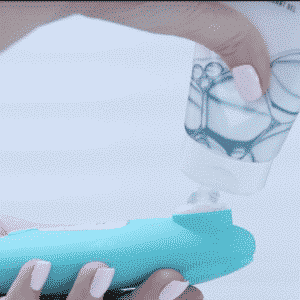
The efficiency and speed of the exfoliation process is significantly enhanced by the use of sonic energy. The NowMi Pro device emits 6,000 sonic pulsations per minute which ensures that every pore is thoroughly cleansed. In addition, the sonic energy increases the circulation of the blood which stimulates skin cell renewal.
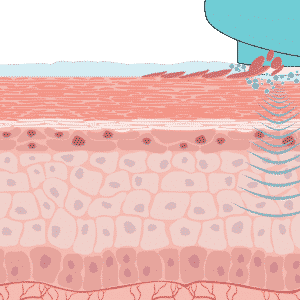
In addition to removing dead skin cells and thoroughly cleansing the skin, the NowMi Pro infuses the skin with vitamin C, vitamin E and hyaluronic acid. These revitalizing ingredients slow down the signs of aging and help it look glowing and fresh.
You should take the following steps:
- Insert the effervescent tablet in to the NowMi Pro device.
- Apply a small quantity of NowMi gel onto the tablet.
- Slowly and gently massage the effervescent tablet onto the skin. Keep adding cleansing gel as necessary.
- Rinse your skin with lukewarm water.
Conclusion:
There are many different exfoliating techniques for facial skin. The two main methods are manual exfoliation and chemical exfoliation. Both remove dead skin cells from the outermost layer of the skin. The NowMi treatment offers a novel solution in which the skin is gently exfoliated using an effervescent tablet and it is automatically infused with nourishing vitamins and Dead Sea minerals.
